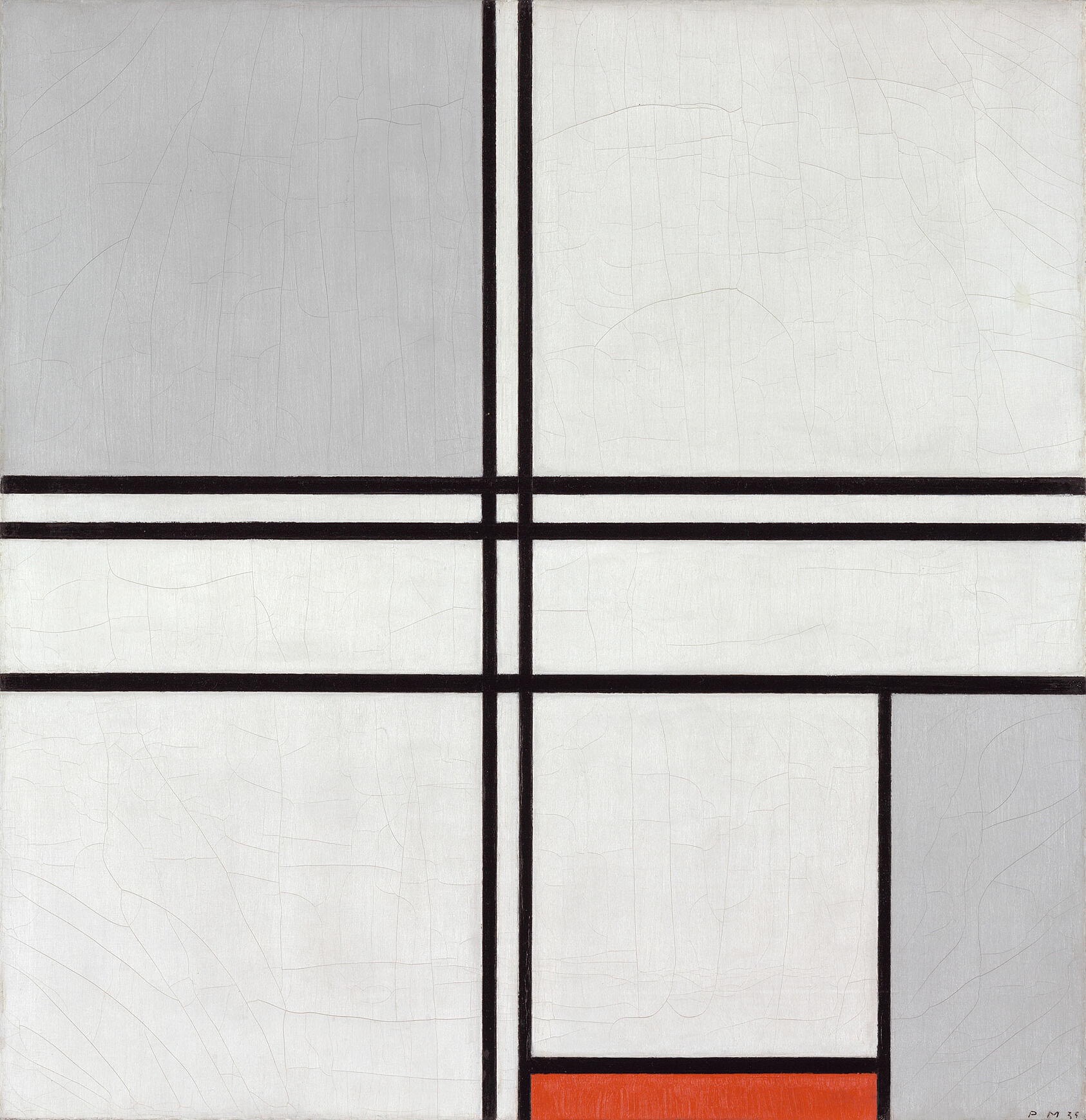CuttingIn

Piet Mondrian: Composition (No. 1) Gray-Red (1935)
"The library's a function of the quality of its shelves."
©2022 by David A. Schmaltz - all rights reserved
Prepping finished, priming finally done, the time comes for adding color. Up until then, everything's focused upon foundation, the sole purpose being to create a consistent surface: as smooth and uniform as possible. The prime coat serves as a proof of sorts, a test to determine if the surfaces have been sufficiently worked such that they might hold the promise of a decent-looking final finish. Of course it doesn't quite satisfy the discriminating eye, so that prime coating features a little back-sliding, some additional sanding, scraping, and filling. The eye always misses something the first few times through. At the point where color comes into play, the game changes. Before, I'm focused upon the broad plain of the surface. Edges between trim and wall color become meaningless. I work when priming as if there were no edges. Once the colors come out, the whole game becomes one of CuttingIn the fine lines separating the various trims and the base wall color.
Once finished, the eye will fail to register much variation on a properly prepared surface. It will appear from even a close distance as if it were a smooth plane, this largely due to the flat nature of the color. We do not as a rule paint houses with glossy finishes because glossy highlights instead of hides imperfection, and believe me, houses might be 99% imperfection; tiny ones, but obvious to touch. The whole art of house painting amounts to pulling one over on the scrutinous eye. Flat finish paints help, but it's mostly a matter of CuttingIn sharp, crisp lines. The edge between the soffit overhang color and the top of the wall trim, twenty feet up the wall, pretty much defines the quality of both of those adjacent painted surfaces. Likewise, the edge between that top trim color and the cascading wall will define the quality of the entire wall. If that line isn't perfectly drawn, the wall will appear crooked. Ninety-nine percent of the actual effort will go into painting that wall, but that cut line will define the entire quality of the finished product.
The paint store offers a variety of gizmos which are supposed to help ensure perfect cut lines, none of which work. The long blade which might be held to ensure no paint bleeds through into an adjacent area actually helps paint escape into that unwanted space. Tape helps, if one can manage to lay it straight. By far the best technique involves drawing the line freehand with a high quality brush. Nothing less will really do, though this only works after considerable practice. The old professional painters can produce perfectly straight cut lines without breaking a sweat. Those of us less experienced hold a wet wipe rag in our backup hand, and we use it. It might take a guy like me a couple of passes before I'm satisfied, but my forward progress is stalled until I satisfy this single requirement. Blow this step and the whole project, all that prep and priming, not to mention the finish painting, will have been for nothing.
I suspect that it's no different in most every human undertaking. I mow the lawn with particular attention to cleaning up the edges. Since my weedeater managed to break itself last year, I've not been attending to my edges and my lawn looks unkempt, even when freshly mowed. If I set a table for supper and set the service crooked to the room, the supper's affected. We curse the joker who can't quite manage to park his car between the parking lot lines. Even writing seems to depend most upon the first and last sentences, the bookends, as I call them. The body of the story's materially affected by the CuttingIn of the start and the finish. The library's a function of the quality of its shelves. There's a good reason why supermarkets hire people to align the products on the shelves. Nothing there would appear very appetizing were in not lined up with perfect edges.


